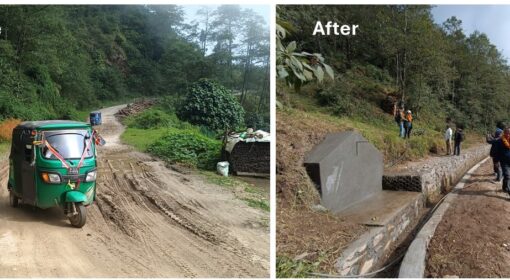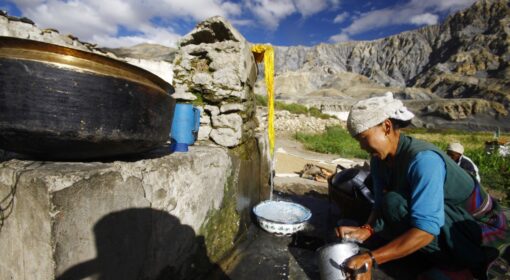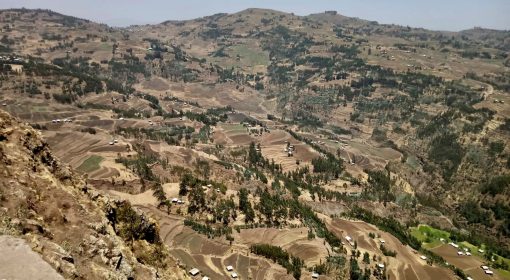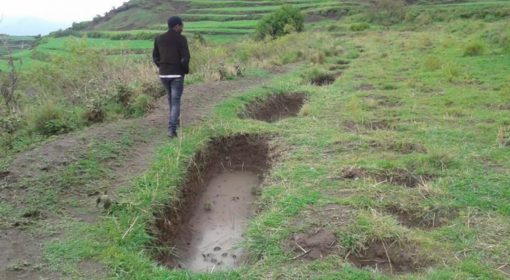by Femke van Woesik & Francesco Sambalino
Climate and weather patterns vary significantly across landscapes, yet discussions about climate management often overlook the critical role of local climates. While general climate models provide a broad understanding of atmospheric trends, they fail to reflect the realities on the ground and capture the unique local conditions. This disconnect highlights an urgent need for focused monitoring and mapping of microclimates—especially at farm and landscape levels—to bridge the gap between coarse data and actionable insights.
The limits of general climate data
Standardized weather stations are usually placed in open, unshaded areas, providing broad-scale data that misses the nuances of shaded, sheltered, or otherwise distinct microclimatic zones. This is problematic for communities and practitioners managing local climates where microclimatic factors—like vegetation and topography—play a critical role in agricultural productivity and human well-being.
In regions like Tanzania, where 70% of the workforce relies on agriculture, extreme heat is more than just an environmental concern—it is a public health and economic risk. Local climates can operate independently from broader climatic trends, influencing the survival of crops and livestock. For example, shaded areas under trees can be several degrees cooler than surrounding fields, offering crucial heat relief for agricultural workers. Without understanding these microclimatic variations, climate adaptation strategies may fail to address local realities.
Advances in microclimate monitoring
Recent advances in low-cost microclimate monitoring tools have enabled researchers to capture data at a much finer resolution. These tools have led to significant insights in fields such as ecology and agriculture, revealing how local climates shape both natural and human systems.
A recent study by De Frenne et al. (2024) offers ten practical guidelines for ground-based microclimate research. One recommendation emphasizes the importance of integrating microclimate loggers with existing weather station networks to build large-scale, high-resolution data sets. This approach would allow for long-term research on how climate warming, land use changes, and biodiversity loss affect ecosystems at a local level.
Such efforts are essential to develop targeted, evidence-based solutions for climate adaptation, particularly in regions facing extreme weather events.
Microclimate monitoring in Tanzania: The Kishade Project
Our ongoing research in Tanzania’s Dodoma region (Kishade project, see more info here) aims to evaluate how trees can protect agricultural workers from heat-related illnesses. For this, microclimate level data is important. Therefore, we have developed a set of microclimate loggers to capture small changes over a set of small-holder farms. The loggers are positioned in different spots and distributed in a way that can describe the effect of agroforestry on the local climate. The loggers are built using consumer grade microcontrollers (similar to Arduino) and sensors (thermometers, hygrometers). We are testing different temperature sensors to explore what is the best option for microclimate monitoring, but also to allow us to carry out some cross-check and validations. This data will help create detailed temperature maps of the study area, enabling us to understand how agroforestry practices influence local climate conditions. By understanding heat risks and local adaptation practices, the project will provide practical, evidence-based solutions for creating more resilient agricultural systems.
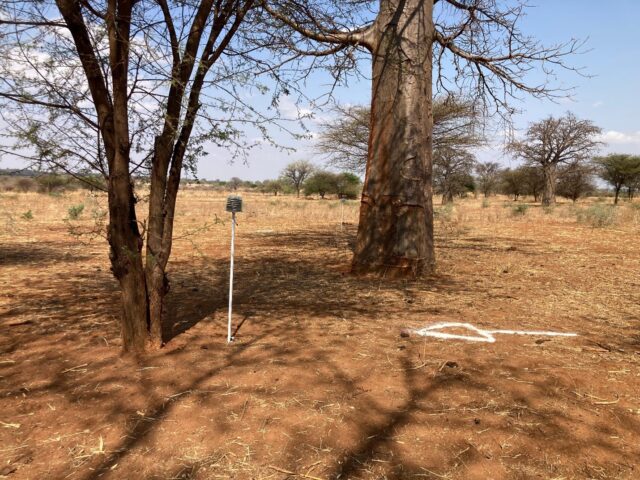
Moving from research to action
Microclimate monitoring is more than a research tool—it is a pathway to creating buffered ecosystems and improving livelihoods. Understanding and managing local climates allows communities to proactively design environments better equipped to handle climate extremes.
Our work in Dodoma is part of this effort to empower communities through evidence-based climate adaptation. By integrating scientific monitoring with local knowledge, we aim to develop strategies that reflect on-the-ground realities. Ultimately, microclimate monitoring bridges the gap between generalized climate data and practical, localized solutions, driving meaningful change in agriculture and public health.
References
Erell, E., Leal, V., & Maldonado, E. (2005). Measurement of air temperature in the presence of a large radiant flux: an assessment of passively ventilated thermometer screens. Boundary-Layer Meteorology, 114, 205-231.
De Frenne, P., Beugnon, R., Klinges, D., Lenoir, J., Niittynen, P., Pincebourde, S., Senior, R. A., Aalto, J., Chytrý, K., Gillingham, P. K., Greiser, C., Gril, E., Haesen, S., Kearney, M., Kopecký, M., le Roux, P. C., Luoto, M., Maclean, I., Man, M., Penczykowski, R., van den Brink, L., Van de Vondel, S., De Pauw, K., Lembrechts, J. J., Kemppinen, J., & Van Meerbeek, K. (2023). Ten practical guidelines for microclimate research in terrestrial ecosystems. Methods in Ecology and Evolution. Advance online publication. https://doi.org/10.1111/2041-210X.14476
